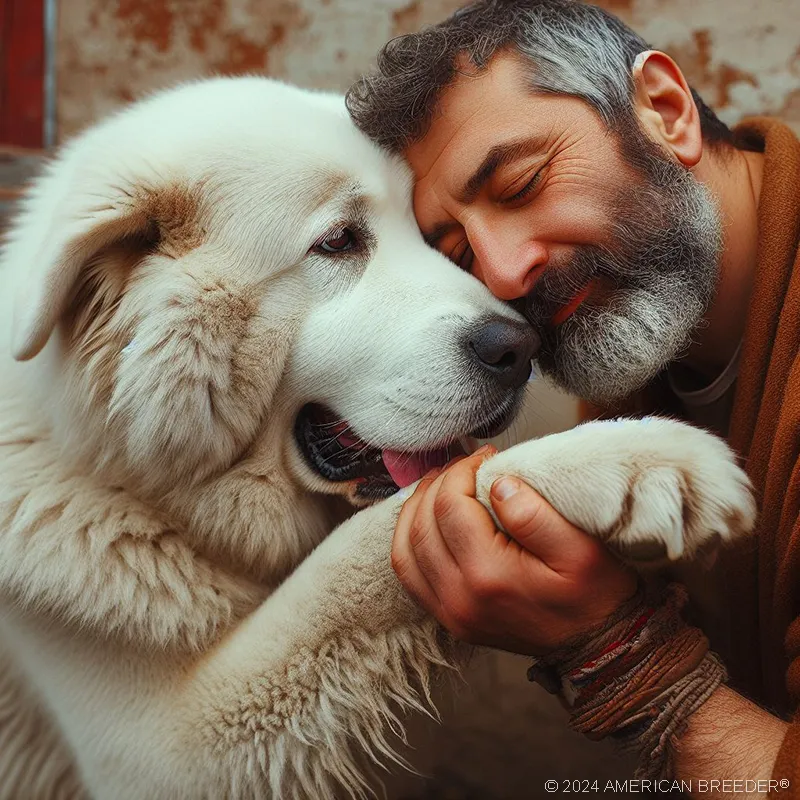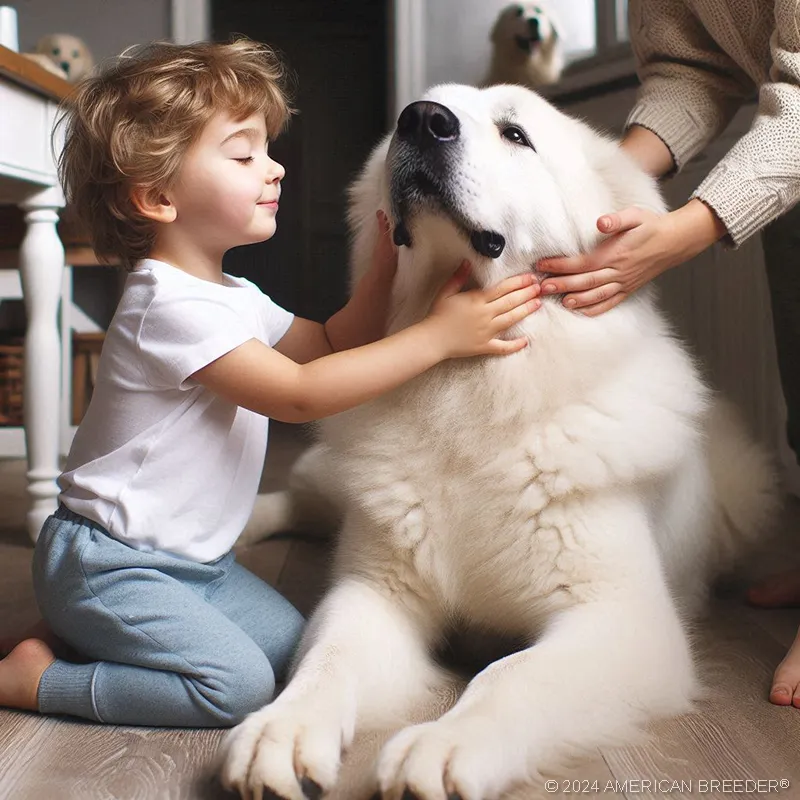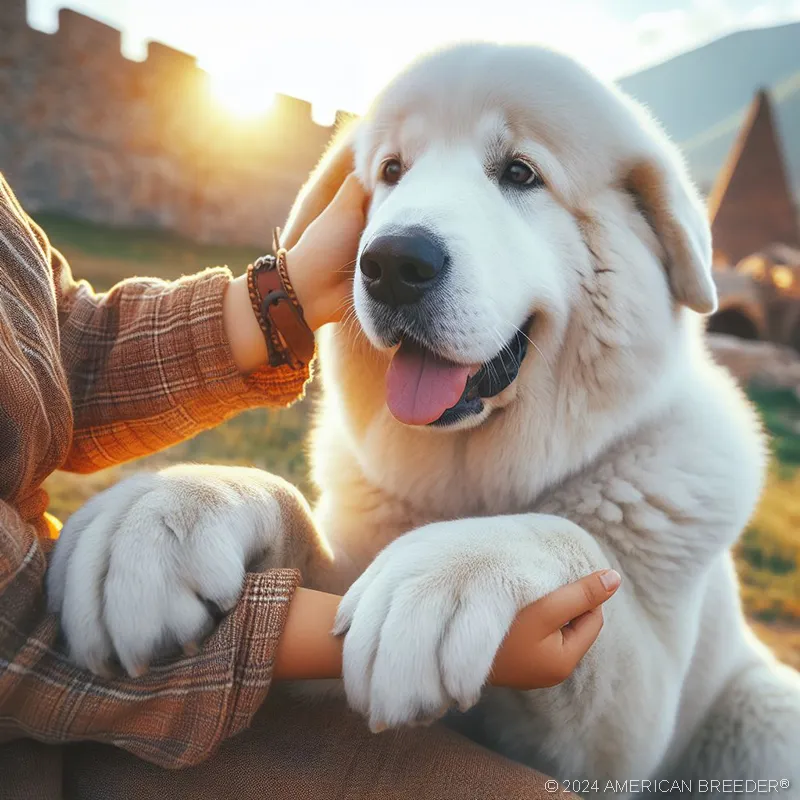The Wolf Crusher: Exploring the Central Asian Shepherd Dog Breed
 Introduction
Introduction
The Central Asian Shepherd Dog, also known as the Alabai or the Turkmen Alabai, is a remarkable breed with a rich history and distinct characteristics. Before deciding to bring this breed into your home, it's essential to understand their unique needs and temperament. Fun fact: This breed is also referred to as the "Wolf Crusher" due to its impressive strength and protective instincts.
Breed Background and History
Originating from the vast expanses of Central Asia, the Central Asian Shepherd Dog has a history that spans centuries. This breed developed alongside nomadic tribes, serving as their loyal guardians and protectors of livestock. Their heritage and cultural significance make them an integral part of Central Asian communities.
Breed Characteristics
Central Asian Shepherd Dogs are large and powerful canines, with males weighing between 110 to 170 pounds and females ranging from 80 to 130 pounds. They have a robust build, showcasing their strength and endurance. Their thick double coat comes in a variety of colors, including shades of fawn, brindle, and white. Some individuals may also display unique markings like black masks or spots.
Temperament and Personality
Known for their unwavering loyalty and protective instincts, Central Asian Shepherd Dogs make exceptional guardians and watchdogs. They are typically reserved with strangers but form strong bonds with their family. Despite their imposing appearance, they can be gentle and affectionate with their loved ones. It's important to note that early socialization and consistent training are crucial to ensure their well-rounded development.
 Trainability and Intelligence
Trainability and Intelligence
Central Asian Shepherd Dogs possess a keen intellect and independent nature. While they are intelligent, they can also be strong-willed, requiring a firm and consistent approach to training. Positive reinforcement methods work well with this breed, as they respond better to rewards and praise. Mental stimulation is essential to prevent boredom and channel their intelligence into positive activities.
Health and Care
Like any breed, Central Asian Shepherd Dogs may be prone to certain health issues, including hip dysplasia and elbow dysplasia. Regular veterinary check-ups, a balanced diet, and proper exercise are essential for maintaining their overall well-being. Their thick coat requires regular brushing to prevent matting and occasional bathing to keep them clean. Daily exercise is necessary to keep them physically and mentally stimulated.
Socialization and Compatibility
Early socialization is crucial for Central Asian Shepherd Dogs to ensure they become well-rounded and confident adults. With proper training and exposure, they can coexist harmoniously with children and other pets. However, their strong protective instincts mean they may be wary of strangers. Supervision and careful introductions are necessary when introducing them to new people or animals.
Living Arrangements and Environment
Central Asian Shepherd Dogs are adaptable to various living arrangements, including apartments, houses, or rural areas. However, their size and exercise needs require ample space to roam and play. A securely fenced yard is ideal for them to burn off energy. While they can adapt to different climates, their thick coat provides better insulation in colder regions.
 Training and Obedience
Training and Obedience
Basic obedience training is essential for Central Asian Shepherd Dogs to ensure they understand and respond to commands. Due to their independent nature, patience and consistency are key during training sessions. Advanced training activities, such as agility or scent work, can provide mental stimulation and reinforce the bond between owner and dog.
Financial Planning
Before bringing a Central Asian Shepherd Dog into your home, it's important to consider the financial aspects. Initial costs include adoption fees or purchase prices, vaccinations, spaying/neutering, and microchipping. Ongoing expenses consist of food, grooming, veterinary care, training, and supplies. It's also wise to budget for unexpected medical costs and consider pet insurance.
Responsible Ownership and Ethical Considerations
When considering a Central Asian Shepherd Dog, it's important to explore all avenues of responsible ownership. Adopting from shelters or rescues not only provides a loving home to a deserving dog but also helps reduce the population of homeless pets. If you choose to go through a breeder, extensive research is necessary to find a reputable breeder who prioritizes the health and welfare of their dogs. Avoiding puppy mills and supporting ethical breeding practices is crucial for the well-being of the breed as a whole.
Legal Responsibilities and Regulations
As a responsible dog owner, it's essential to familiarize yourself with local regulations and legal responsibilities. This includes obtaining the necessary licenses for dog ownership and adhering to leash laws. Understanding vaccination requirements and keeping your Central Asian Shepherd Dog up to date with their shots is not only important for their health but also to comply with local regulations.
 Resources and Support
Resources and Support
To provide the best care for your Central Asian Shepherd Dog, it's helpful to have access to local resources such as veterinarians, trainers, and grooming services. These professionals can offer valuable advice and support throughout your dog's life. Additionally, online communities, forums, and educational materials can provide further breed-specific information and connect you with other Central Asian Shepherd Dog owners for shared experiences and insights.
Conclusion
In conclusion, the Central Asian Shepherd Dog is a remarkable breed with a rich history and unique characteristics. Their loyalty, strength, and protective instincts make them excellent guardians and beloved family members. However, owning a Central Asian Shepherd Dog requires commitment, time, and resources. By providing them with proper training, socialization, and care, you can enjoy a fulfilling and rewarding relationship with this magnificent breed.
Central Asian Shepherd Dog Quick Reference Guide
 Breed Background: Origin: Central Asia | Breed Purpose: Livestock Guardian | AKC Class: Working | Year Recognized by AKC: 2022
Breed Background: Origin: Central Asia | Breed Purpose: Livestock Guardian | AKC Class: Working | Year Recognized by AKC: 2022
Appearance: Size: Large | Weight: 90-150 lbs | Coat Type: Double coat, dense | Colors & Patterns: Various, often solid | Distinctive Features: Muscular build, powerful frame
Temperament: Energy Level: 3/5 | Loyalty: 5/5 | Friendliness to Pets: 3/5 | Friendliness to Strangers: 2/5 | Trainability: 3/5 | Playfulness: 2/5 | Frequent Barker: 4/5 | Chase Instincts: 4/5 | Sense of Smell: 3/5 | Drive to Hunt: 3/5
Health & Care: Health Issues: Hip dysplasia, bloat | Lifespan: 10-12 years | Grooming Difficulty: Moderate | Exercise Needs: High
Socialization: Interaction with Children: Cautious, better with older kids | Interaction with Pets: May be dominant, early socialization needed | Interaction with Strangers: Reserved | Elderly Compatibility: Gentle and protective | Ease of Training: Moderate
Suitable Living Arrangements: Apartment: No | House: Yes | Rural Area: Preferred | Yard Size Requirements: Large yard needed
Training & Obedience: Trainability: 4/5 (Challenging) | Intelligence: 4/5 (High) | Obedience: 3/5 (Moderate) | Problem-Solving: 4/5 (Advanced) | Easily Stimulated: 3/5 (Moderate) | Focus Level: 3/5 (Moderate) | Easily Distracted: 2/5 (Low)
Financial Planning: Typical Price Range: $1000 - $3000 | Initial Expenses: Puppy vaccinations, crate | Ongoing Annual Expenses: Food, vet visits
Breeding: Reproductive Maturity: 18-24 months | Litter Frequency: Once a year | Litter Size: 6-10 puppies | Stud Cost: Varies | Breeding Challenges: Selective breeding needed for health and temperament.
Did You Enjoy this Article? Share it and Help Us Spread the Word!
If you found this article helpful, we'd appreciate it if you could share it with your friends or link to it from your website, blog, or group! You can also use the convenient social share tabs on the left side of the screen to instantly share this page to your social media feed. For more ways to support and promote the American Breeder Community, visit our Share & Promote Together page for social media posts and memes you can copy and share. Your support means the world to us!
Disclaimer: The information provided in this article is for general informational purposes only and does not constitute legal, medical, financial, or professional advice. While we strive for accuracy, we make no representations or warranties regarding the completeness, accuracy, reliability, or suitability of the information. Please consult with a professional before making decisions based on the content provided. American Breeder Inc. assumes no responsibility for any errors or omissions or for the results obtained from the use of this information.
